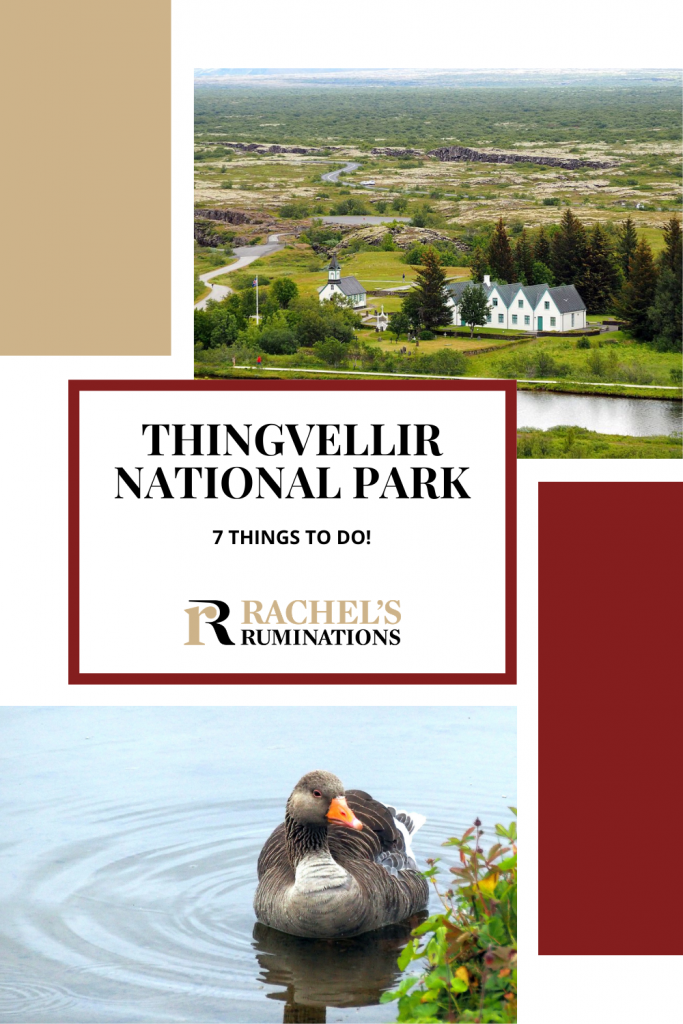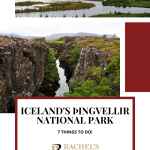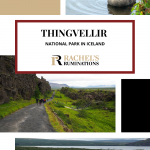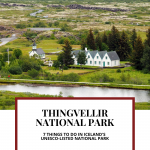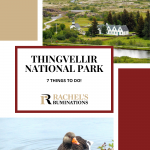7 Things to do in Thingvellir National Park, Iceland
I’ve already written quite a bit about our 3-week road trip around Iceland last summer, but I only briefly mentioned Thingvellir (more properly spelled as Þingvellir) in my itinerary article. While it wasn’t a place I particularly prioritized in our planning, it turned out that there are plenty of things to do in Thingvellir National Park.
Disclosure: This article contains affiliate links. If you click on one of them and make a booking, I will receive a small commission. This will not affect your price.
But first, a little background. This UNESCO-listed site is important for two reasons: one historical and the other geological. We went there to see both.
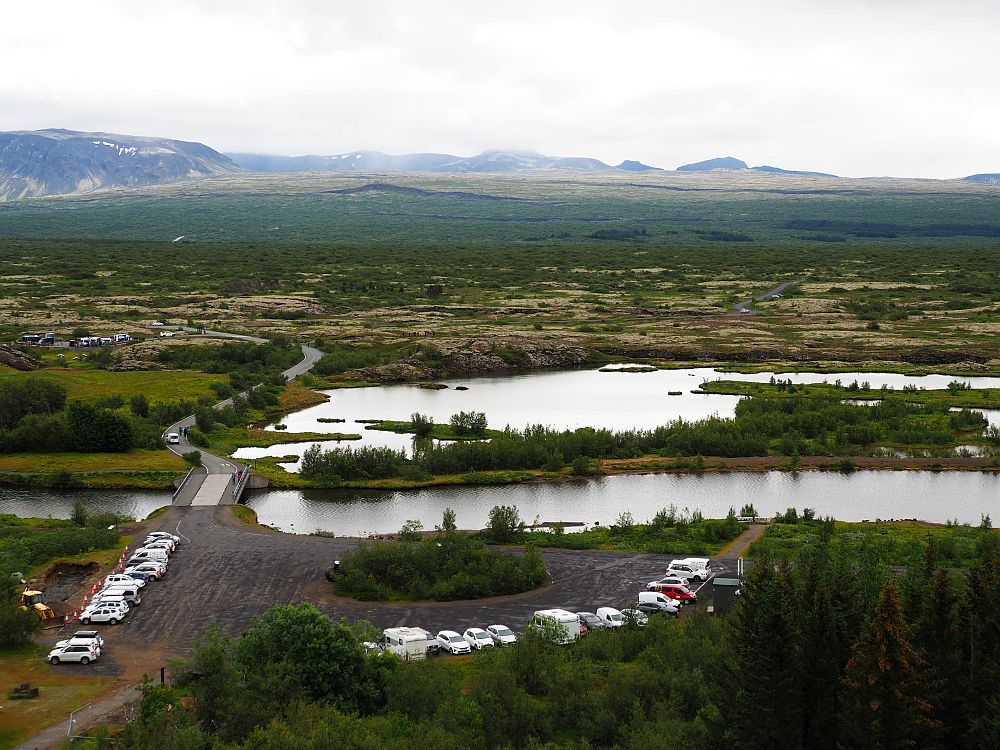
History of Thingvellir National Park
Iceland doesn’t have as much history as countries here in Europe. It wasn’t even permanently populated until the 8th century AD. Thingvellir is a revered spot as the place in which Iceland’s identity as a nation began and developed.
Thingvellir was the seat of government in what is called the “Old Commonwealth” period, starting in 930 AD. That was when the first assembly (AlÞingi, which is also translated as parliament) of chieftains met at Thingvellir, traveling from all around Iceland, setting up temporary turf buildings and staying about two weeks.
They met every summer to pass new laws and judge court cases. This lasted until 1262, when Iceland came under Norwegian rule, but the AlÞingi still retained some power to make legal decisions until 1662, when Denmark took power. After that, it kept meeting until 1798, but with diminished powers.
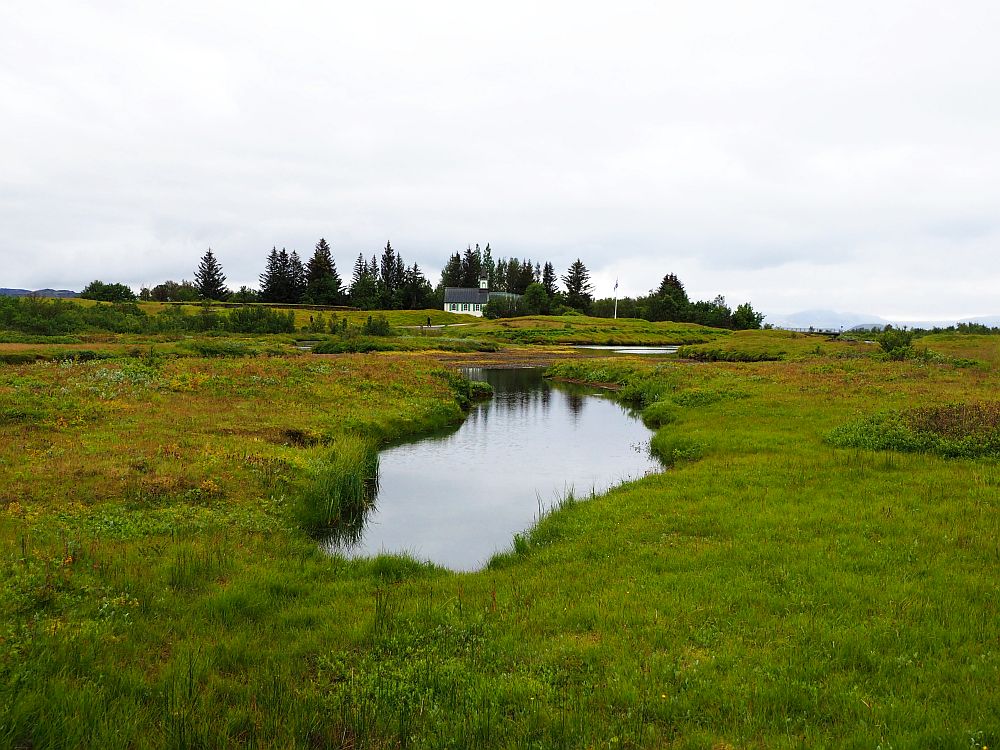
Geology
As for geology, Thingvellir is known as the only place where the Eurasian and North American tectonic plates meet and can be seen on dry land. Over time, the two plates have moved apart here, creating a rift valley. The gravel road down into the valley goes along the rift between high stony cliff walls. Being along the Mid-Atlantic ridge, the area is still – like all of Iceland – subject to earthquake activity as the tectonic plates shift.
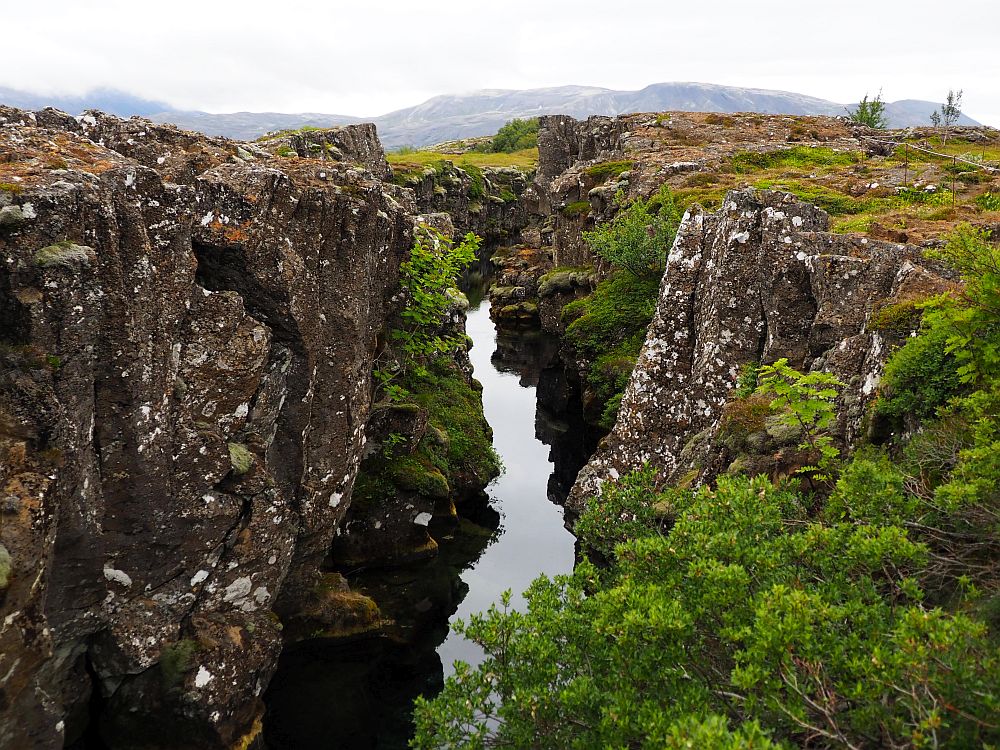
Lake Þingvallavatn
Thingvellir is also home to a lake called Þingvallavatn, known for how clear the water is and the diversity of life it supports. It’s Iceland’s largest lake, and it’s so clear because the water comes from the Langjökull glacier, taking years to filter through lava underground. Rain that falls on the lava takes several months. That’s why the water is so clear: because the lava rock filters it so well.
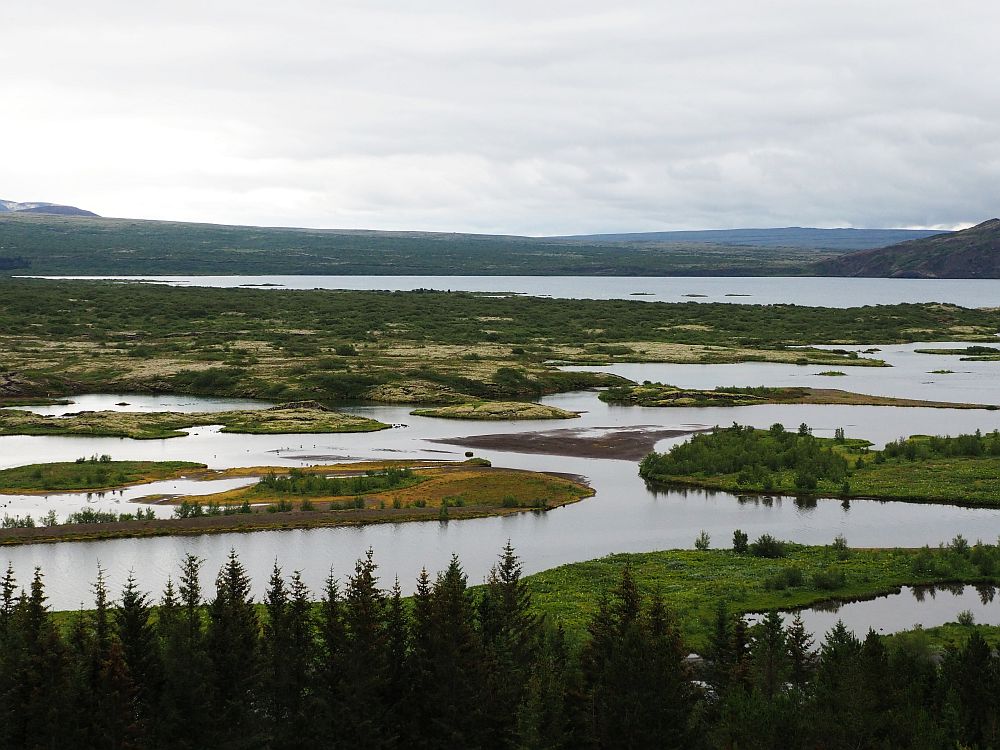
Things to do in Thingvellir National Park
1. See an exhibition at the Hakið visitor center.
While little remains of the AlÞingi’s meeting site at Thingvellir National Park, the Hakið visitor center has a remarkably good exhibition called “Heart of Iceland,” telling the history of the parliament and Iceland’s entire history, as well as covering Icelandic laws and the geology of the area. It’s all very interactive, with, for example, VR goggles that place you in the parliament’s circle to listen to a debate and table-sized touch screens to show how rule over Iceland changed.
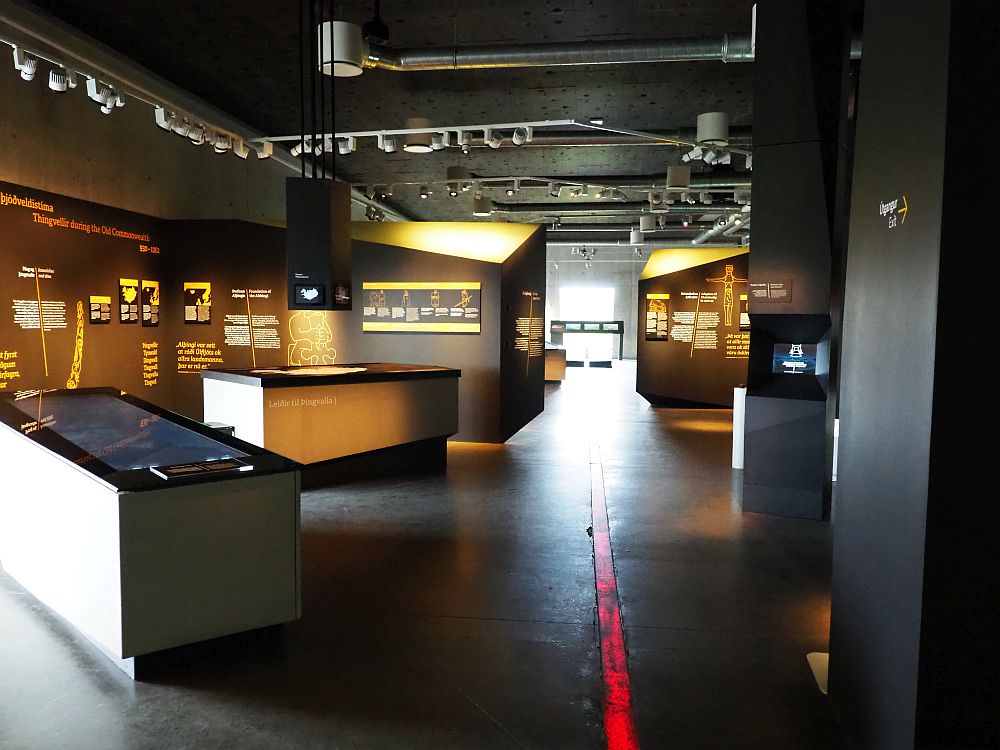
I highly recommend starting here, even before descending into the rift valley. It’ll help you appreciate what you are seeing as you explore the park.
The exhibition is open Monday-Friday 10:00-16:00, Saturday-Sunday 10:00-17:00. Admission: ISK1000 (€6/$7), children under 18 free.
2. Walk in the rift.
As you walk from the visitor’s center down into the valley or on your way to Öxarárfoss waterfall, you’ll be literally walking inside the rift. It’s quite awe-inspiring to realize those black stone cliffs are edges of continental plates.
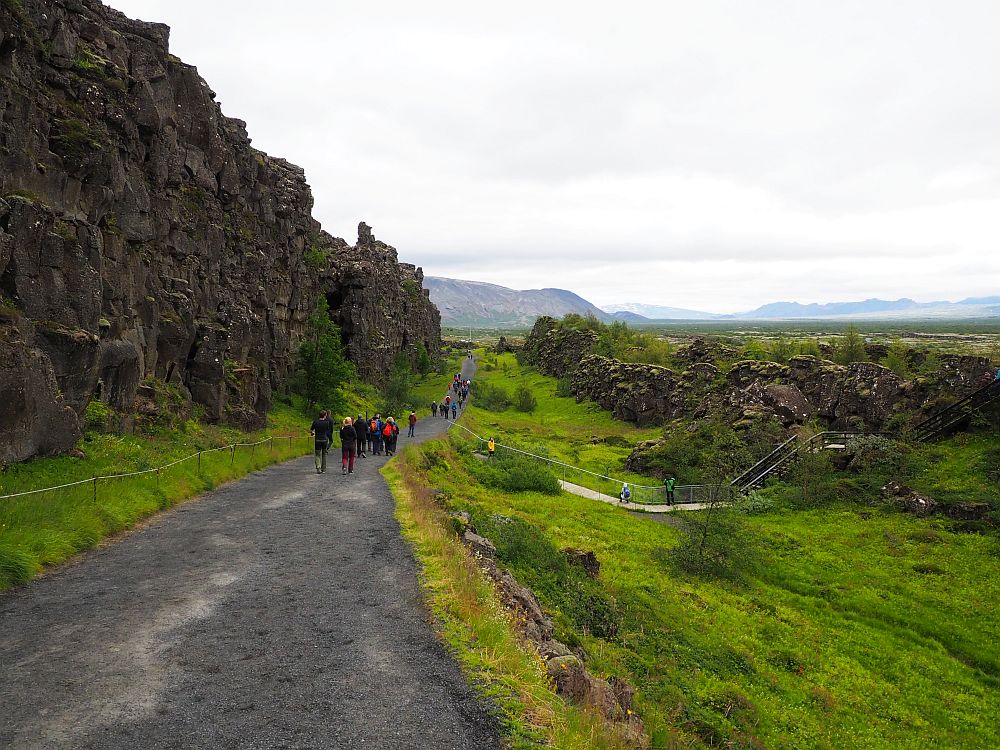
3. Go snorkeling or diving.
One of the popular activities in Thingvellir National Park is to go snorkeling or diving in Silfra between the two continental plates. Since the plates have moved apart here, the space between them has become a river, with that clean lava-filtered water flowing into Lake Þingvallavatn.
We decided not to go snorkeling mostly because it seemed much too cold – they use drysuits, but still … As for diving, you can only dive if you have a dry suit certificate or can show you’ve taken at least 10 dry suit dives in the last two years.
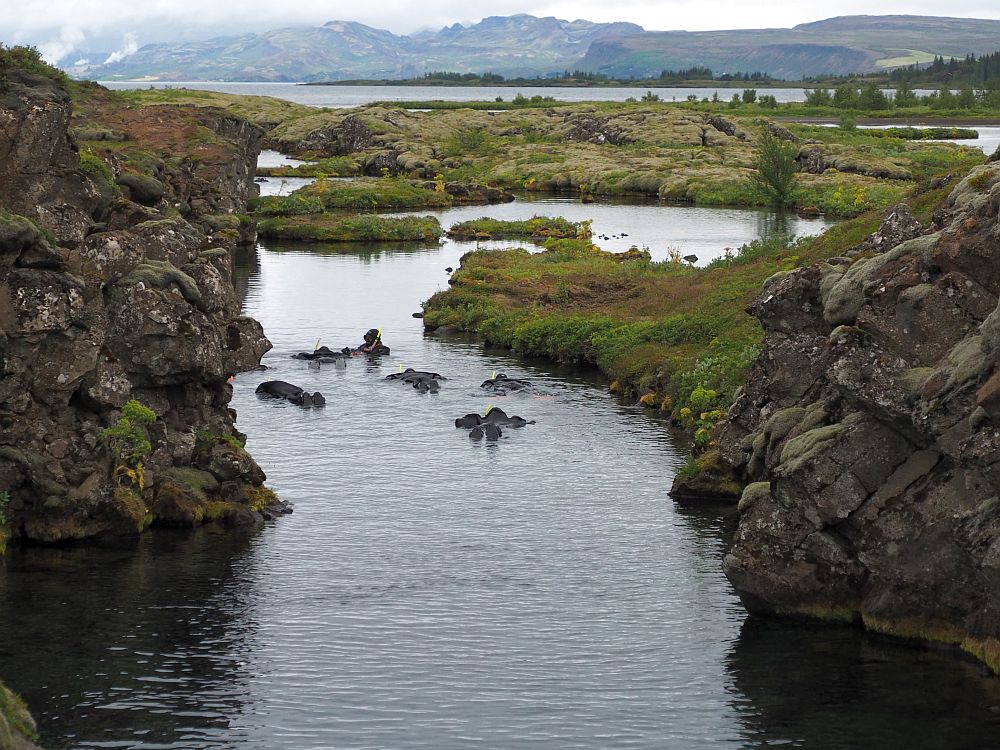
Instead, we walked along the trail to the spot where the snorkelers go into the water and past it to watch them move through the rift. That was enough for us.
4. See some Thingvellir National Park sights.
We walked further in Þingvellir’s central valley, checking out Thingvallakirkja, a pretty church, consecrated in 1859. A church has been standing on the same site since the adoption of Christianity in Iceland in about the year 1000.
The house next to the church looks like a modern version of Laufás and Glaumbaer. It’s the summer residence for Iceland’s Prime Minister. Dating to 1930, it originally had three gables and a turf roof and housed the national park warden and the priest for the church next door. In 1974, two gables were added and just that end of the house was the summer residence – a very modest accommodation for a nation’s leader. Later the government bought the whole building.
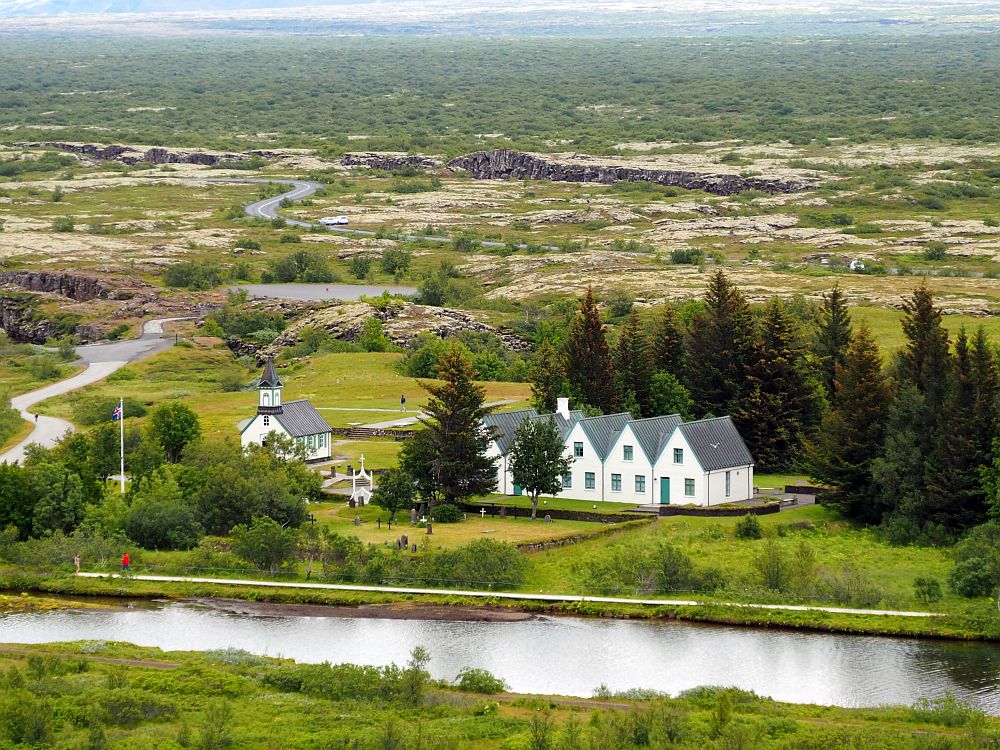
While we didn’t go and check them out, there are also some vague ruins in the valley. Some date all the way back to the Commonwealth period before Iceland came under Norwegian rule. The ruins are pretty minimal: just bumps, really. They mark where temporary structures stood: visitors and assemblymen (chieftains) would rebuild these every year on the remnants of old structures, with turf walls and grass roofs.
5. Take a walk/hike.
There are a number of hiking trails in the park. Marked hiking trails lead to several ruined farmsteads and waterfalls. Ask for information at the visitor’s center. Don’t forget to bring insect repellent for the midges, some water, and also sun lotion and/or a hat if it’s a bright day!
6. Do some birdwatching.
Thingvellir National Park is a great place to do some birdwatching, particularly around the lake to see water birds. Bring your binoculars!
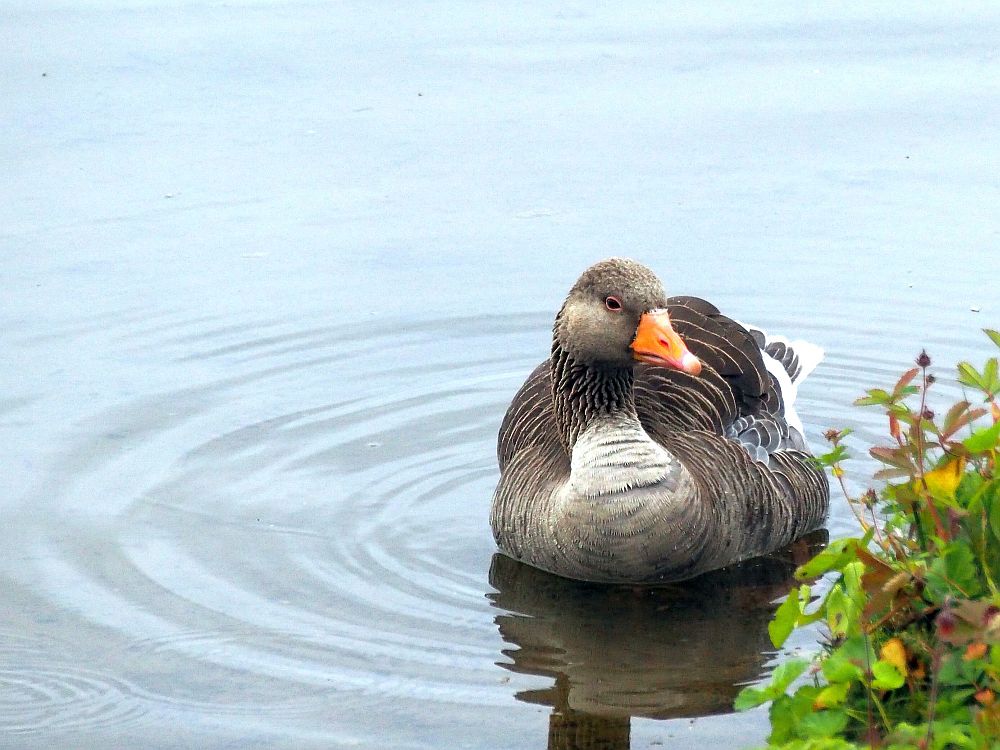
7. Visit Öxarárfoss waterfall.
Inside Þingvellir National Park, you’ll find Öxarárfoss waterfall. Apparently the river that feeds it was diverted very early in the Commonwealth period so that it would fall into this fissure. This brought the river’s water nearer to where the parliament was meeting.
It’s an easy walk either from the visitor center or from a nearby parking lot. While it is pretty, it doesn’t compare to some of the others we saw on this trip. Read my article about waterfalls in Iceland to see what I mean.
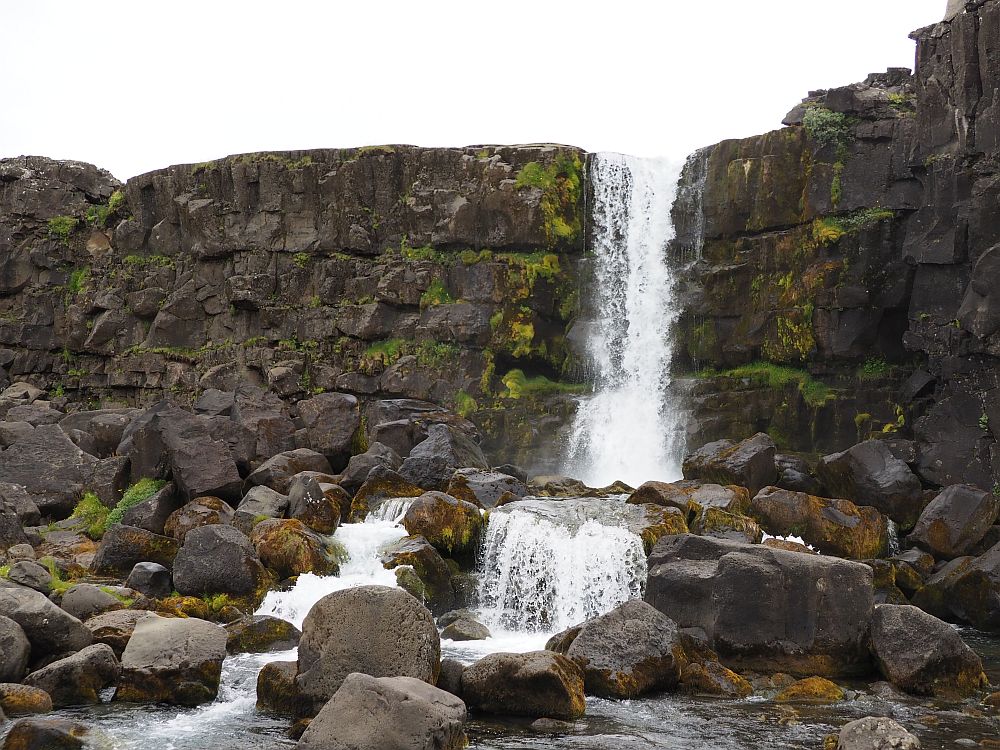
If you decide to go to Thingvellir, leave at least half a day, but plan for a whole day if you’re into hiking. If you don’t have a rental car, the best and easiest way to get there is to take an organized tour from Reykjavik.
Use the button below to shop for tours to Thingvellir from Reykjavik:
Are there more things to do in Thingvellir National Park that I’ve left out of this list? Please let me know!
Þingvellir National Park: Take route 1 out of Reykjavik and turn right onto route 36. While admission to the park is free, if you park your car in P1, P2 or P5 you’ll have to pay for parking either at pay machines or online here. Don’t forget or your rental car company will likely add an additional charge on top of the parking fee! Þingvellir’s website.
